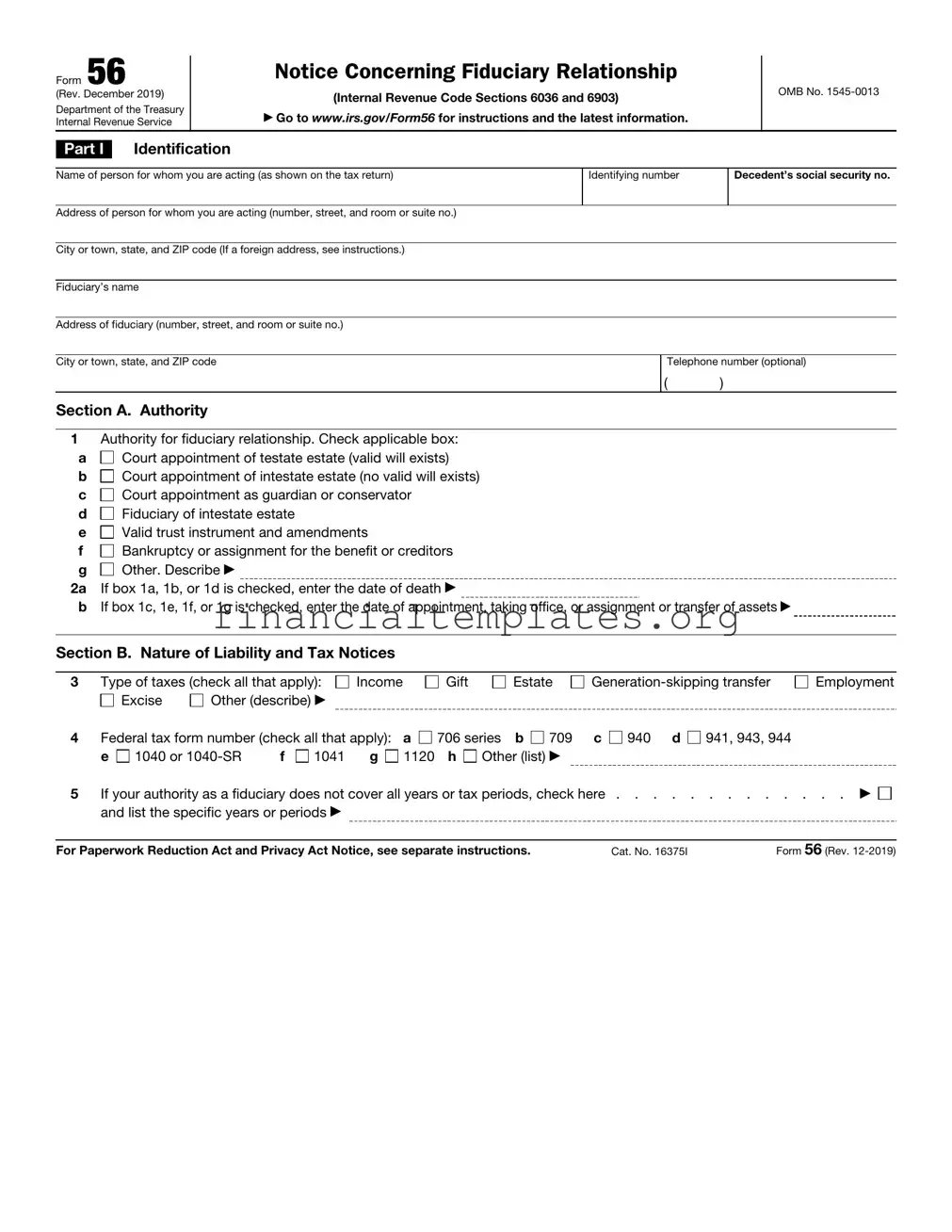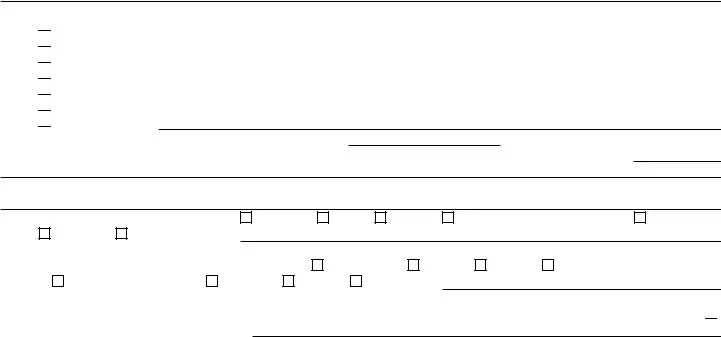The IRS Form 2848, Power of Attorney and Declaration of Representative, is similar to the Form 56 in that both involve the authorization of individuals to act on behalf of others in matters related to the Internal Revenue Service. Form 2848 specifically allows an individual to appoint someone else to represent them before the IRS, handling their tax matters, much like Form 56 authorizes a fiduciary to act on behalf of another entity or person.
IRS Form 1041, U.S. Income Tax Return for Estates and Trusts, shares a connection with Form 56 through the focus on fiduciary activities, particularly concerning tax obligations. While Form 56 notifies the IRS of the creation or termination of a fiduciary relationship, Form 1041 is the actual tax return that a fiduciary might need to file to report income, deductions, and credits of an estate or trust.
Form 8822, Change of Address, is implemented to inform the IRS about a change of address, similar to how Form 56 includes sections for detailing the addresses of both the fiduciary and the individual or entity for whom they're acting. This ensures that all correspondence and documentation from the IRS are sent to the correct address.
Form SS-4, Application for Employer Identification Number (EIN), is connected to Form 56 in situations where a fiduciary relationship impacts tax reporting and identification numbers. New estates or trusts might need an EIN, which is analogous to an individual's Social Security Number, to identify the entity for tax purposes. Form 56 also deals with identification numbers, including the decedent’s social security number and other identifying information.
IRS Form 706, United States Estate (and Generation-Skipping Transfer) Tax Return, is similar to Form 56 when dealing with estates since it involves tax filings required after someone's death. Form 56, in setting up a fiduciary relationship for an estate, often precedes the necessity of filing Form 706, which computes the estate tax due to the federal government.
IRS Form 709, United States Gift (and Generation-Skipping Transfer) Tax Return, alongside Form 56, addresses the transfer of wealth, albeit in different contexts. Form 56 could be used in scenarios where a fiduciary manages gifts that are part of an estate or trust, while Form 709 is used to report gifts that exceed annual exclusions, potentially affecting the tax obligations of the estate or trust.
IRS Form 941, Employer's Quarterly Federal Tax Return, though primarily for employment taxes, relates to Form 56 in scenarios where a fiduciary manages an entity that has employees. The fiduciary, having been designated through Form 56, would be responsible for filing Form 941 to report income taxes, social security tax, or Medicare tax withheld from employees' paychecks.
IRS Form 990, Return of Organization Exempt From Income Tax, and Form 56 cross paths when a fiduciary is managing a non-profit organization or a trust associated with charitable activities. In this case, Form 56 would indicate the fiduciary relationship, and Form 990 would be the required tax document to report the organization's exempt status and related financial activities.
IRS Form 4506, Request for Copy of Tax Return, complements Form 56 in contexts where a fiduciary needs to obtain prior tax returns of the person or entity they are representing. This might be necessary for a range of reasons, including resolving past tax issues or compiling financial histories.
Lastly, IRS Form 3520, Annual Return To Report Transactions With Foreign Trusts and Receipt of Certain Foreign Gifts, has similarities with Form 56 when a fiduciary manages or receives assets from foreign entities. In such cases, Form 56 declares the fiduciary relationship, while Form 3520 deals with the specific reporting requirements associated with foreign transactions.


 Court appointment of testate estate (valid will exists)
Court appointment of testate estate (valid will exists) Court appointment of intestate estate (no valid will exists)
Court appointment of intestate estate (no valid will exists) Court appointment as guardian or conservator
Court appointment as guardian or conservator Fiduciary of intestate estate
Fiduciary of intestate estate Valid trust instrument and amendments
Valid trust instrument and amendments Bankruptcy or assignment for the benefit or creditors
Bankruptcy or assignment for the benefit or creditors Other. Describe
Other. Describe 
 and list the specific years or periods
and list the specific years or periods 

 Court order revoking fiduciary authority
Court order revoking fiduciary authority
